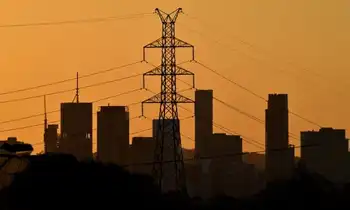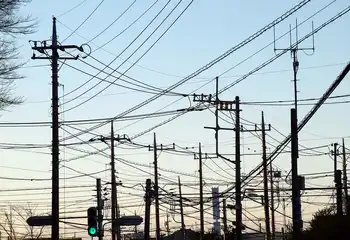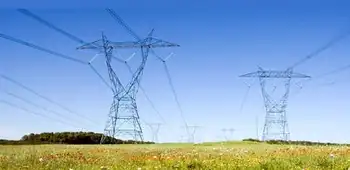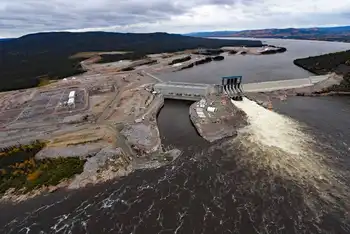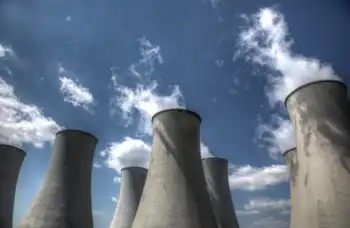Putting your energy literacy to the test
By Globe and Mail
Protective Relay Training - Basic
Our customized live online or in‑person group training can be delivered to your staff at your location.

- Live Online
- 12 hours Instructor-led
- Group Training Available
Here are a few questions that will help test your own energy literacy.
What is the fastest-growing form of global energy use?
If you said electricity, you're right. And because coal is the major fuel for electricity, power generation contributes about 21 per cent of global greenhouse gas (GHG) emissions, compared with land, sea and air transportation at 11 per cent, according to International Energy Agency data.
What is the case in Canada?
Electricity generation produces 17 per cent of Canadian GHG emissions. Transportation produces 25 per cent, much higher than the global average and reflecting the size of our country.
Which fuels generate Canada's power?
Nationally, hydro contributes about 61 per cent, coal 20 per cent, nuclear energy 15 per cent, natural gas and oil 4 per cent. Wind contributes less than one-half of 1 per cent, according to Canadian Electricity Association data.
Are there differences in how provinces generate power?
There certainly are. Hydro supplies almost all power in British Columbia, Manitoba, Quebec and Newfoundland. Coal dominates power generation in Alberta, Saskatchewan and Nova Scotia. Coal, hydro and nuclear provide New Brunswick's and PEI's power. Ontario's top source of power generation is nuclear, followed by hydro and coal.
How important is the cost of electric power?
It's absolutely crucial. The cost of electrical power is embedded in virtually everything we produce and consume. And in a globalized economy, the cost of electricity is a major competitive factor for Canadian exporters. China, the world's most formidable exporting competitor, already has a significant power cost advantage because of its cheap (and dirty) coal-fired plants.
Won't the Copenhagen framework level the playing field by imposing emissions restrictions on competing exporters such as China?
First, it's important to understand that besides Canada, only Scandinavia, Japan and some members of the European Union have committed to reduce emissions below the 1990 Kyoto base year. And Canada's targets are by far the hardest to reach because both our population and economy have grown a lot more than in those countries. Going into the Copenhagen Summit, statements made by officials from China and India leave little hope those countries will accept any binding reduction targets. So whatever measures Canada agrees to in Copenhagen will only increase other countries' competitive advantage.
British Columbia and Ontario have introduced "green power" plans. How will these policies affect power costs?
Let's look at Ontario first. The current wholesale price of power is less than 5 cents per kilowatt hour. The new "green power" plan offers 13 cents for land-based wind farms, 19.5 cents for offshore wind and bio-gas projects, and up to 80 cents for solar power that will be rolled into provincial power rates. This means that Ontario power consumers will pay from 2.6 to a whopping 16 times their current power cost for green power. The implications for households and businesses caused the Ontario Power Authority to resist the government's green power plan, prompting the provincial minister of energy to "direct the OPA" to authorize the subsidized rates.
British Columbia has a similar green power plan, providing subsidized rates for wind, biomass, geothermal and "run of the river" power projects. The cost implications caused the B.C. Utilities Commission (BCUC) to reject the inclusion of the subsidies in BC Hydro's rates. The provincial government has vowed to override the decision of the very experts it has appointed to safeguard the public interest.
What about the reliability of green power?
An interesting aspect of the BCUC's to decision reject the green power plan was the need to retain a standby natural gas fired power plant to meet load requirements during low wind conditions. Thus, wind power is not only more expensive to generate, but its lack of dependability requires costly redundant standby facilities. And plans for a national cap and trade system would see consumers of coal generated power send even more money to green power producers in the form of "carbon credit offsets". Together with paying more for green power, paying for standby generation facilities, this amounts to a triple subsidy for the green power industry, and a triple whammy for consumers.
If wind and solar power are costly and unreliable, what are the low-emission alternatives to coal?
The zero emissions alternative is nuclear. Canada's nuclear technology is not only one of the world's safest, but it can also use a form of fuel not conducive to weapons production. And we have one of the world's largest reserves of uranium. Yet while implementing wind and solar subsidies, B.C. has slapped a ban on uranium exploration. Nova Scotia recently followed suit. Both provinces cited "public resistance" to nuclear power.
How much will green power subsidies increase electricity costs?
That depends on the private sector's reaction to the subsidies. If past experience is any guide, there will be a lot of players ready to grab their share of the largesse. I welcome the addition of various forms of green power to our energy supply. But development of a multibillion-dollar industry based entirely on public subsidies is both a hazardous road for investors, and an unaffordable road for consumers.
Here's the final question, dear readers: Do you think it's time to find out just how profoundly both local and global energy policies could affect your future?





